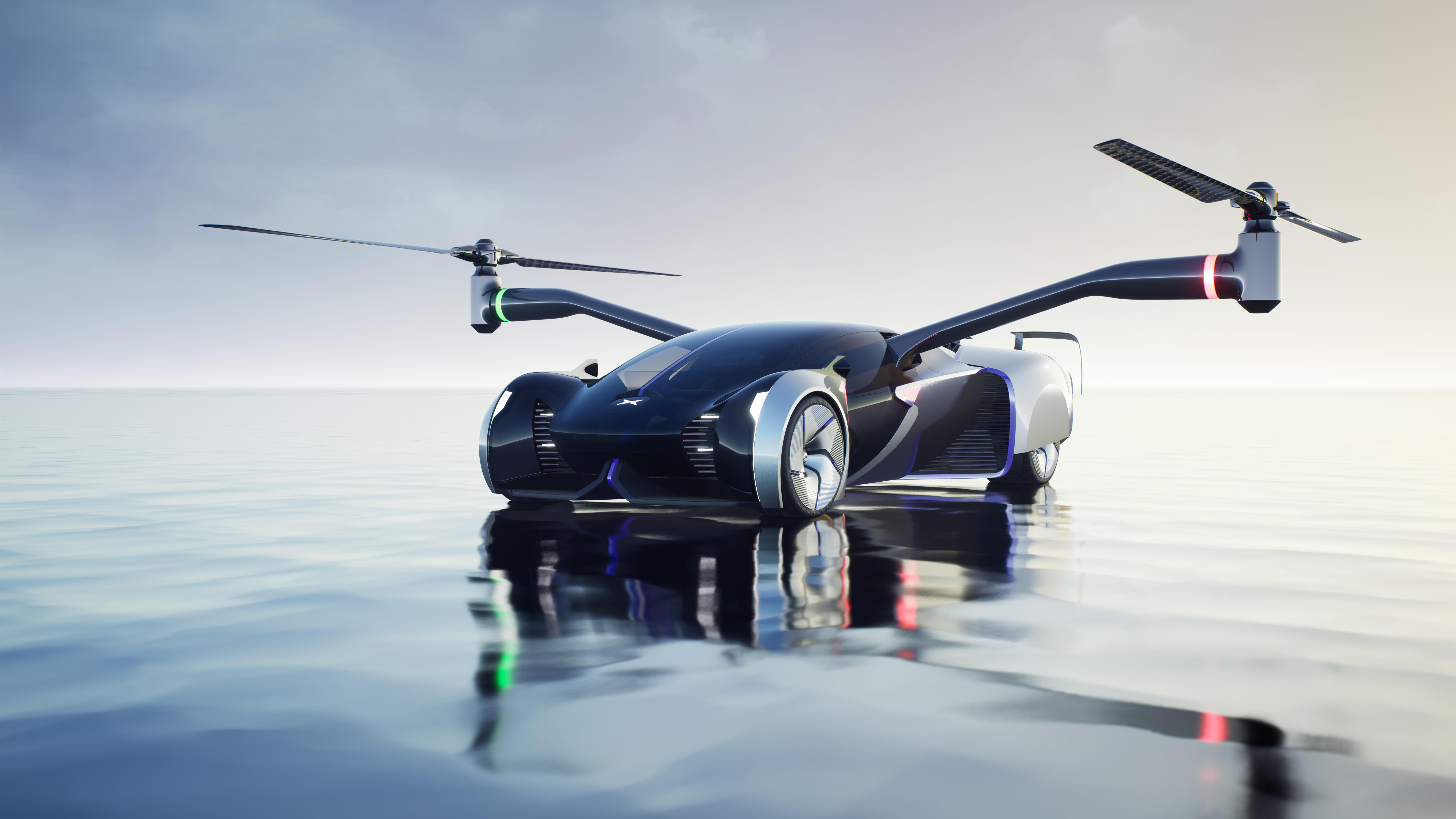
Chinese Tesla rival XPeng has unveiled a “flying car,” a two-seat, supercar-style electric vehicle that transforms into a twin-rotor helicopter, under development by its affiliate HT Aero.
Deliveries are planned to begin in 2024.
HT Aero has completed a $500 million Series A funding round, backed by XPeng, to fund development of the fly/drive vehicle, the largest amount yet raised by a Chinese urban air mobility (UAM) startup.
XPeng said HT Aero has completed more than 15,000 flights over five generations of electric vertical-takeoff-and-landing (eVTOL) vehicles since 2016, including the Voyager X2 two-seat multicopter now in testing.
To transform from driving to flying mode, the rear deck of the sixth-generation vehicle opens, two arms rotate forward into position, and the two-blade rotors at the end of each arm unfold. Each rotor is powered by two electric motors. High energy-density batteries provide the power.
The vehicle takes off, flies and lands as a helicopter. A pair of aerodynamic tail surfaces are raised from the rear of the car to provide stability, but there are no indications of other lifting or control surfaces, except perhaps the body itself. XPeng has not released performance details.
The steering wheel is decoupled and a joystick is used for control in flight mode. The vehicle has a triple-redundant, fly-by-wire flight-control system, autopilot and recovery parachute system. In driving mode, the vehicle is 16 ft. long. In flying mode, width from tip to tip of the rotors is 40 ft.
The vehicle is not designed to change configuration in traffic, except while stationary in an appropriately sized space, and will be restricted to operation in visual flight rules conditions. A safety system, including thunderstorm detection, is expected to evaluate the weather to ensure it is safe to take off, XPeng said.
The fly/drive vehicle is about half the weight of its P7 electric car, XPeng said, thanks to carbon fiber construction and integrated structural design. The price will be 1 million yuan (about $160,000), about three times the price of the current range-topping P7.
While eVTOL air taxis are popularly called flying cars, almost none are. Exceptions include the NFT Aska, a folding four-rotor vehicle designed to be stored in a garage, driven on local roads to an airfield, flown to an airport close to a city, and then driven by road to the final destination.
There are a handful of true flying cars in development, but most are conventional-takeoff-and-landing designs such as the Terrafugia Transition and the supercar-style AeroMobil and Klein Vision AirCar. Both of the latter vehicles have a wing that folds back along the body and a pusher propeller.
Assessing HT Aero’s design for Aviation Week, a helicopter expert expressed concerns. They included ineffective and undersized tails, forward center of gravity with arms extended, noise and vibration from the narrow-chord two-blade rotors, visibility downward from the cockpit, and the road wheels’ lack of sink-rate capability.
“Also, closing the design on both car and an aircraft with any useful load is a Herculean task, even if every inch were useful and not stylized,” he said, citing concerns about space for batteries and doubts about the size of the blade-fold hinges and motor nacelles shown in concept images.





Comments